Blogs
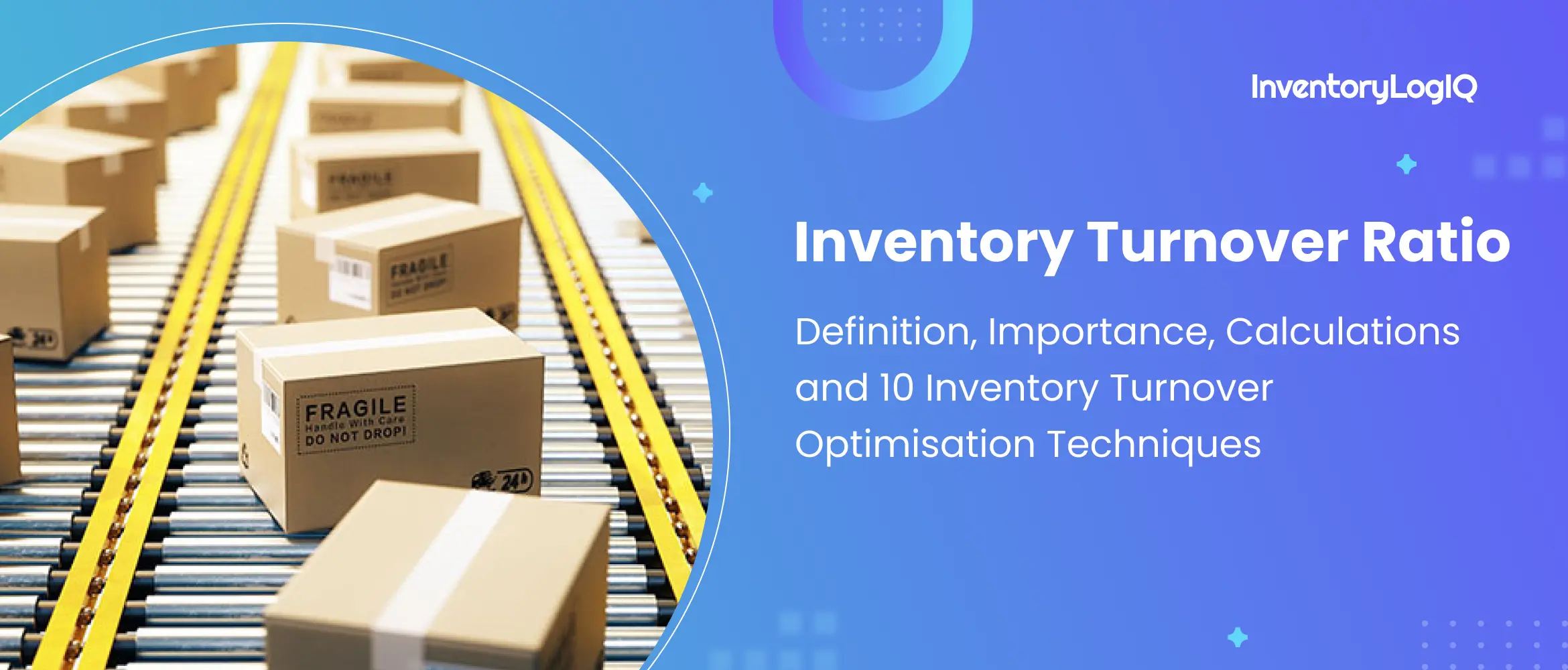
Inventory Turnover Ratio: Definition, Importance, Calculations and 10 Inventory Turnover Optimisation Techniques in 2023
Inventory is the primary asset of a business. A seller purchases the required amount and wishes to sell it as soon as possible. A product may fly off the shelf at any time on its own merit, even though there is no major discount offered on it. In most cases, though, products float somewhere in the middle, necessitating the need for all businesses to keep track of what is in demand and how fast it is selling. Everything from pricing strategy and supplier relationships to promotions and the product life cycle is influenced by inventory turnover. The inventory turnover ratio measures how well a company manages inbound inventory from suppliers and outbound inventory from warehousing to the rest of the supply chain. Turnover is critical for every business, whether it is a B2B or DTC fulfillment company. A company's inventory turnover rate also relays information about its inventory forecasting, inventory management, and sales and marketing skills. A high inventory turn rate indicates that sales are robust or that inventory is insufficient to support current sales volumes. A low inventory turn rate, on the other hand, suggests low sales, low market demand or an inventory surplus. Knowing which direction the sales winds are blowing will help in inventory accuracy and achieve an accurate inventory turnover ratio. What is Inventory Turnover? Inventory turnover refers to the amount of inventory that a company purchases and has sold for a particular time period. A complete inventory turnover rate shows that a company has sold all of the stock it bought, excluding any items lost due to expiry or damage. Inventory turnover is common in successful businesses. However, it varies by industry and product category. Inventory management issues such as shifting client demand, poor supply chain planning and overstocking can all have an impact on the inventory turnover rate. Definition of Inventory Turnover Ratio The inventory turnover ratio is the number of times a company's inventory has been sold and re-stocked in a certain period of time. The method is also used to determine how long it will take to sell the present inventory. The inventory turnover ratio is calculated using a formula that divides the total cost of items sold by the average inventory during the same time period. A higher ratio is preferable to a low ratio since a high ratio indicates robust sales. Effective inventory control, also known as stock control, where the organization has a strong understanding of what it has on hand, is required to determine your turnover ratio. Examples of Inventory Turnover Rate Inventory Turnover Ratio (ITR) = Cost of Goods Sold (COGS) / Average Inventory For example, if your COGS was 100,000 rupees in the last fiscal year and your average value of inventory was 25,000 rupees, your inventory turnover ratio would be 4. Inventory Turnover = Number of Units Sold / Average Number of Units On-Hand If you sell 100 units in a year while having an average of 20 units on-hand at any given time during the year, your inventory turnover rate is 5. Why is Inventory Turns Important? Inventory turns or inventory turnover is important for a variety of reasons. A sluggish turnover may imply that there is lower market demand for certain things, allowing sellers to adjust pricing, offer incentives to drain inventory faster or change the mix of goods available for sale in the future. These are all critical decisions for a business to make in order to stay financially healthy and competitive. A company's product mix must be aligned with its client's demand. Fast inventory turns are a signal that a company's purchasing strategy is not syncing up with market demand and that there are delays somewhere in the supply chain or that demand for a specific item is increasing. This data can aid a business in determining whether to raise prices, increase orders, diversify suppliers, sell a product more prominently or purchase additional related inventory. Material requirements planning (MRP) is a related technique for determining inventory needs while balancing supply and demand. You Can Also Check: What is ERP Inventory Management System? How to Calculate Inventory Turnover Ratio? You can figure out how to calculate the inventory turnover ratio by doing two things - determining COGS and average inventory. Let’s assume you already have the figure for your COGS. Average Inventory The estimation of the value (in monetary terms) or number (units) of particular categories of inventory at any given time throughout a set time period is known as average inventory. If you don't know how to calculate average inventory, here's how you can do it: (Inventory at the Start + Inventory at the End) / 2 It is the sum of beginning inventory and ending inventory — from a certain time period — divided by two. Inventory Turnover Ratio Formula The inventory turnover ratio formula is simple if you have your COGS and average inventory. It is as follows: Inventory Turnover Ratio (ITR) = Cost of Goods Sold (COGS) / Average Inventory Alternate Ways to Use the Inventory Turnover Ratio You can use the inventory turnover ratio to analyze how fast an organization is selling its inventory and compare its efficiency in doing so against industry standards. For most industries, the best inventory turnover ratio falls between 5 and 10. However, the average inventory turnover rate varies from one industry to another, depending on the complexity of the business environment and the nature of its products. Inventory turnover is mainly used to analyze the inventory sales speed of an eCommerce business and compare its efficiency with the industry standards or competitors. There are a few more ways by which inventory turnover ratios are utilized. A few of them are: Trending Turns to Manage ITR Inventory turnover ratios are one of the best approaches to spot market demand-driven patterns as well as outmoded or slow-moving inventory. That way, you will have a head start on deciding whether to scale up or decrease any product line or brand. You'll have far better inventory control and a higher harvest of sales possibilities as a result of this. At the same time, you will be searched and visible on trending platforms which will help your brand attain new customers. SKUs and Segments For strict controls on specific stock levels, inventory turnover is generally measured at the SKU (stock-keeping unit) or segment level. Inventory segmentation is the process of categorizing or segmenting SKUs based on parameters that make sense for your company. Inventory turnover can also be employed at an aggregated level when divergent goods are grouped based on factors such as the geographic location of retail outlets. Using the Pareto Principle The Pareto principle or 80/20 inventory turnover ratio rule suggests that 80% of your company's sales revenues are generated by 20% of the SKUs you carry. The idea specifies selling a few products for low or negligible profit. It will persuade buyers to purchase more and, at the same time, enables sellers to store more profitable goods. It is important to understand what stock segment you are dealing with, so you can maintain the appropriate amount of goods in hand. What is an Ideal Inventory Turnover Rate? For the eCommerce industry, a lower inventory turnover rate may indicate sluggish sales and dwindling market demand for a product. So generally, the greater ratio number is supposed to be better, as it reflects robust sales most of the time. There are certain exceptions to this theory. Luxury products have a low inventory turnover rate. On the other hand, sometimes, a high inventory turnover ratio is self-defeating. In case you order a small amount of inventory but the frequency is high, the inventory turnover rate will increase, which means you are not purchasing enough inventory to support the rate of sales. So in that instance, you may not be making as much profit as you could be, so you need to check whether gradually increasing pricing stabilizes the ratio while raising unit margins. High Inventory turnover is common in high-volume, low-margin businesses. Low-volume, high-margin sectors, on the other hand, tend to have substantially lower inventory turnover percentages. The ideal inventory turnover ratio is between 5 and 10, implying that goods should be sold and restocked every one to two months. For perishable goods companies like florists and grocers, the recommended ratio will be higher to avoid inventory losses due to the risk of spoilage. Top 10 Techniques of Inventory Turnover Optimization Make the Supply Chain More Efficient Source To do this, low-cost logistics partners could be the best option. Faster delivery is important but assurance of the delivery of an undamaged product is more important for any seller. If a damaged product is delivered, it will be returned, which will not be counted as inventory turnover and will also lead to more expenses. Eliminating inefficiencies in the supply chain will boost your sales, revenues and total margins. Make Changes to Your Pricing Approach Source Adjust your product pricing to gain higher profit margins on high-demand items and free up capital by getting rid of outdated inventory, commonly known as dead stock or obsolete inventory. If items are proving difficult to sell, consider donating them to charity and receiving a tax deduction or selling them through a secondary channel. Check Your Rank in the Industry Source Is your inventory turnover rate high or low compared to the rest of your industry? When you notice growing tendencies in your inventory ratios, are there opportunities for you to steer a stronger strategic position on competitive items? By effectively answering these questions and managing your inventory, you can get a greater market share and improve your industry rating. Comparing yourself with competitors will enable you to analyse what you are doing right or wrong and you can use some of their best practices to gain an advantage. Improve Your Forecasting Skills Source Sales figures and inventory reports provide useful concrete data for more precise inventory forecasts. This information can also aid in future sales planning, such as recommending methods to improve your product mix or creatively bundling things to move slower inventory at a better margin. Either way, forecasting inventory is a necessary tool that eCommerce retailers need to employ in order to achieve an optimum inventory turnover ratio. Automate Your Purchase Orders Source Automation improves efficiency and has the potential to reduce expenses on its own. However, when you combine it with an order management system that allows for easy reordering of popular inventory so that it is constantly available, you gain even more benefits. Consider adopting an inventory system that generates purchase orders automatically to save yourself time and effort. The result will be better control and fewer errors. Use Technology Source Use the latest technology to optimize inventory turnover. With the help of technology, you can place inventory items strategically, such as high-demand items being placed in a more accessible way and bulky items being placed close to cargo bays. Humans are susceptible to making errors that technology simply doesn’t, so it will make your overall business operations more efficient. Hire Experts or Train Your Employees Source An expert inventory planner can save you a lot of time and money by saving taxes, optimizing the storage of your inventory and generally employing the best practices to increase your inventory turnover rate. They can handle every situation, whether it is inventory shortage or overstocking and can suggest a better way to free your inventory. These processes can then be followed by your employees to make inventory management more effective. Encourage Sales of Old Stock Source When you have a huge quantity of old and outdated stock, you need to get rid of it as soon as possible because it not only freezes your capital but also takes up storage space, loses value and defames your brand’s name. If they are sold through a sale, inventory turnover increases rapidly. The brand gets more visibility and increased sales velocity. This enables you to not only prevent a loss due to outdated products but also to generate more revenue from sales that you may not have been expecting. Encourage Your Customers to Pre-Order Source You can have instant and guaranteed sales of your items if you can convince your clients to preorder and register for certain products. This will enhance your turnover but be sure you have enough inventory to handle the requests you receive. Smart marketing and high-demand products are often required to entice buyers to pre-order, so try creating a specific sales and marketing plan around preorders for popular items and see what happens. This will also help you more accurately forecast the amount of inventory you require in advance. Employ Effective Marketing Source To improve your inventory turnover rate, you will require a strong marketing plan. You should concentrate on underperforming products and connect with elusive clients. You can achieve your goal of boosting sales and thereby improving your inventory turnover rate by pursuing new markets and utilizing all available marketing channels. In order to attract new clients and keep existing ones engaged, businesses can use social media, SEO, paid advertising, content marketing and email marketing. Inventory Turnover vs Days Sales of Inventory Inventory turnover measures how rapidly the inventory of a company can be sold. Days sales of inventory (DSI) measure the average time it takes for a company to convert its inventory into sales. The inverse of inventory turnover for a given period is DSI, which is calculated as (inventory / COGS) X 365. DSI is the number of days it takes to turn inventory into sales, whereas inventory turnover is the number of times inventory is sold in a year. Improving Inventory Turnover with Inventory Management Software Moving average inventory can be used by companies that use the perpetual inventory technique rather than a periodic inventory system to compare mean inventory levels over vast periods of time. To facilitate a more realistic comparison of the performance, moving average inventory adapts pricing to the current market standard. For improving inventory turnover rates, inventory management software has several features that can assist you in modernizing and optimizing your inventory management policies and practices. Such software enables your organization to switch to the constant inventory methods of accounting with a continuous real-time inventory record. Automated point-of-sale systems and company asset management software will immediately reflect changes in inventory by tracking sales, inventory depletion and restocking frequency. It enables you to set a demand formula after gathering data and forecasting upcoming demand. At the same time, you can apply the formula with respect to your inventory and optimize ordering costs. Inventory management software, when used in combination with an ERP system, can assist in optimizing your supply chain, assigning and managing SKUs, automating purchase orders and much more. This will reduce errors, increase efficiency, give you more control, boost customer satisfaction and make your business more profitable overall. Suggested Read: How to calculate Inventory to Sales Ratio? Conclusion: How Can InventoryLogIQ Help to Manage Your Inventory Turnover Ratio? Inventory turnover is an important metric for businesses to track and manage. It measures how quickly a company is able to sell its inventory and is calculated by dividing the cost of goods sold by the average inventory during a given period. A high inventory turnover ratio indicates that a company is able to efficiently sell its inventory, while a low ratio may indicate excess inventory or slow sales. The inventory turnover ratio is one of the most important yet fairly less talked about metrics. Lately, we are seeing some leading brands in the US making headlines due to mismanagement of this metric. Lululemon is ending the year with $1.7 BN of unsold inventoryAllbirds has a 20% drop in margins owing to the $11.6 MN inventory write downAbout 23% of brands lost buy-box on Amazon last year due to stock-outs As financial fundamentals take the center stage, 2023 will be the year when a brand’s ability to efficiently manage its inventory asset will determine its ability to survive/dominate its market segment. As an intelligent fulfillment platform, we have this asset under our management and help our brands outperform by striking the right balance between managing stock-outs and excess inventory through our proprietary algorithms. If you need assistance with managing your inventory turnover ratio, InventoryLogIQ has smart technologies for inventory management. We check what is your current inventory turnover ratio and suggest the accurate amount of inventory to keep in order to maintain the perfect inventory turnover ratio and prevent any shortages or overstocking situations from occurring. When you have a facility to give you a better customer experience and tackle other lengthy eCommerce processes, your business starts generating more returns. InventoryLogIQ resolves most of the problems and takes care of each step involved in efficiently storing your inventory. Suggested Read: What is Inventory Valuation? Importance, Objectives, Methods, and Challenges in 2023 Inventory Turnover Ratio: FAQs What factors affect the inventory turnover ratio?Turnover rates often rise during a new product launch and growth phase, peaking as the product approaches maturity. Sales and inventory turnover eventually fall due to market saturation, advancements in existing technology and changing client preferences. What does the inventory turnover ratio tell you?The inventory turnover ratio is a calculation of how frequently inventory is sold over a specific time period. Why is it important to analyze the inventory turnover ratio?The inventory turnover ratio is a productivity metric that determines how successfully a company manages its inventory. Higher rotation rates minimize storage and other holding expenses so achieving a high ratio is important. Should inventory turnover increase or decrease?Companies seek higher inventory turnover ratios in general. When the stock turnover ratio falls below industry requirements, it is necessary to improve it. What does high inventory turnover indicate?If the inventory of a company's turnover is high, it reflects that its product is in high demand. It could also reflect that the company ran a successful advertising campaign or a sales promotion that resulted in an increase in sales. In any case, it shows that the business is effectively transferring inventory during normal business operations.
December 13, 2022
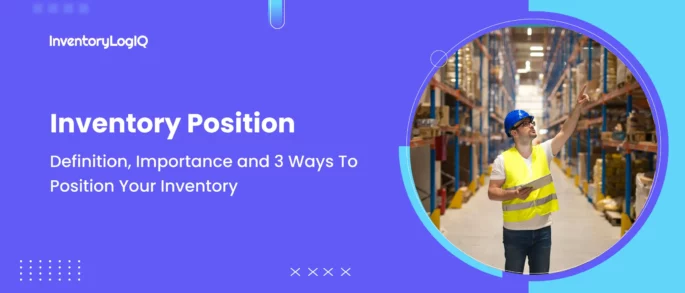
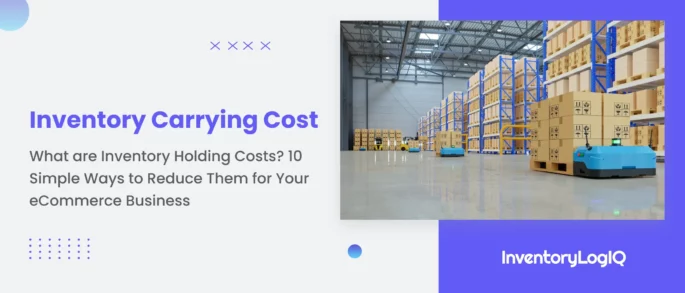


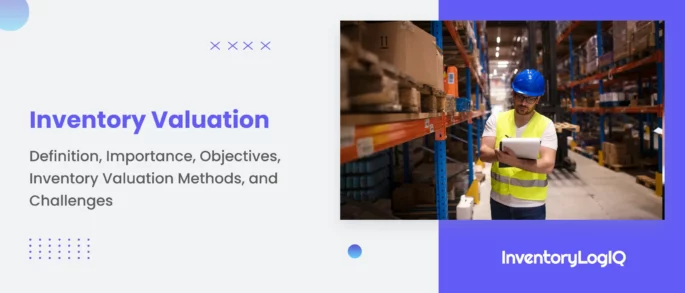
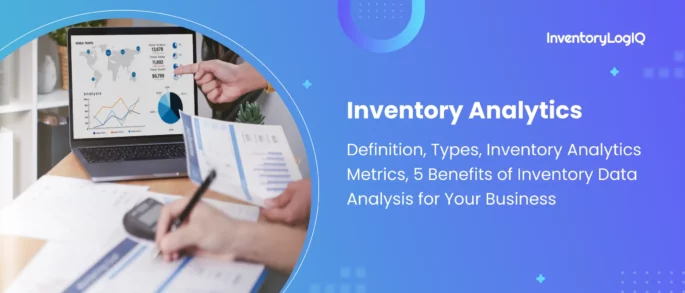
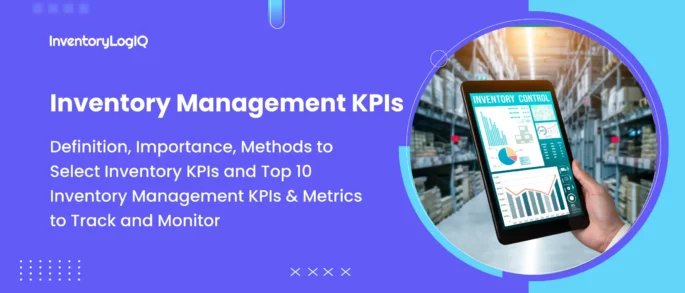
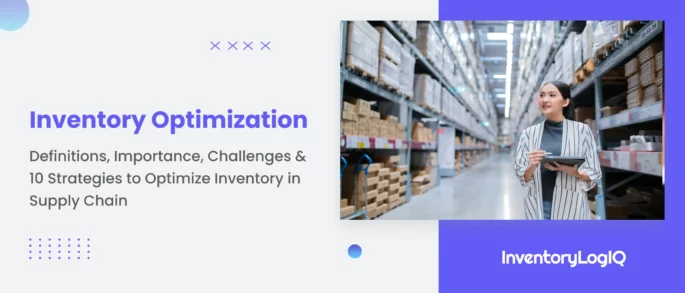
![Inventory Allocation 101: Definition, Pros, and Cons & Factors to Consider While Allocating Inventory in eCommerce [2023]](https://inventorylogiq.com/wp-content/uploads/2022/10/Frame-302-685x293.webp)